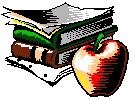 Rethinking
The Academy:
Rethinking
The Academy: Rethinking
The Academy:
Rethinking
The Academy:The first of these is English 215, a course to be titled Writing for Electronic Environments; as its catalog description indicates, its purpose will be to help students ". . .explore ways of writing for electronic environments" through "such elements as text, graphics, audio, and full-motion video" (215). Though the primary audience for this class will be English majors who are registered for the undergraduate writing concentration, both authors feel it important to open up the course to all UIC students, including especially engineering and design students, as the distinctions between "departments," "programs," and "majors" begins to blur in cyberspace.
McAllister and Dorwick are also in the process of designing a four hundred level English course entitled Theory and Practice of Electronic Writing, which will build on the work of 215, and which will "[address] issues in the theory and practice of using electronic media as a form of communication, considering topics such as rhetorical strategies and multimedia scholarship." This course is intended for both graduate and undergraduate students, including those graduate students in UIC's Language, Literacy, and Rhetoric program (4xx).
Both these courses are intended to meet the needs of students looking to work in electronic environments - however, they raise issues that must be addressed by departments who are beginning to work and teach in electronic environments, such as staffing. Who will teach such courses as they are added to the college catalog? What kinds of equipment are needed, and who will train teachers in their use? What computer literacy do students possess at any given institution? What hardware and software do they have access to? Do they own their own equipment?
There are also larger theoretical issues raised by these types of courses: What is the act of writing in electronic environments, and how does it differ from the act of writing linear text for print publication? What is the relationship between writing and networked technology, and how does it differ from the act of writing on a stand-alone computer with a word processing program, or from the use of a typewriter as writing technology? What strategies are necessary for teaching writing in environments such as Lotus Notes or Eudora?
In fact, in the UIC English Department, these questions have led to the formation of a new committee charged with the task of developing a policy to insure the quality and accountability of such courses. This committee (consisting of faculty, staff, and student members) is considering the implications of teaching via computers and other technological interfaces, a process which has - at least temporarily - stopped the implementation of 215 and 4xx.
Last Modified: August 2, 1996
Copyright © 1996 by Keith Dorwick